Did You Know?
Manchar is the largest freshwater lake in Pakistan with an area ranging from 250 to 500 square kilometers
26°24'56.9"N 67°40'38.0"E
Manchar is the largest freshwater lake in Pakistan with an area ranging from 250 to 500 square kilometers
The Best Time to Visit Sindh Province is Winters. Preferably from September to April Peak Summers (May to August) can get extremely hot with temperatures reaching higher than 40 °C . Hence Summers are not recommended.


Manchar Lake, located in Jamshoro District of Sindh, is the largest freshwater lake in Pakistan. Situated approximately 20 kilometers from Sehwan Sharif—a town notable for the shrine of the revered Sufi saint Lal Shahbaz Qalandar—the lake occupies a geographically significant location in the region. It lies to the west of the Indus River, nestled at the foothills of the Kirthar Mountains, which serve not only as a geographical boundary but also as the catchment area and natural source of inflow for the lake.
Manchar Lake is the largest freshwater lake in Pakistan. The lake spans over 250 square kilometers under normal conditions and expands to more than 500 square kilometers during the monsoon season. Its a shallow lake and the depth ranges between 2.6 to 3.8 meters, with certain shallow regions averaging from 0.5 to 3.75 meters. Manchar Lake receives water from three primary sources: the Indus River, hill torrents originating from the Khirthar Mountain range, and the Right Bank Outfall Drain (RBOD-I), also known as the Main Nara Valley Drain (MNVD). Over time, the contribution from the Indus River and hill torrents has significantly decreased due to morphological changes and shifting climatic conditions. As a result, the lake’s current inflow is largely dependent on a single, and heavily polluted, source—RBOD-I/MNVD.
Historically, the principal natural source of freshwater for the lake was Nai Gaj, a stream descending from the uplands of the Khirthar Mountains. The flow of Nai Gaj is highly seasonal, driven by rainfall patterns over the Balochistan plateau and the Khirthar range. This results in substantial water inflow during the monsoon season, with markedly reduced flow during the winter months.
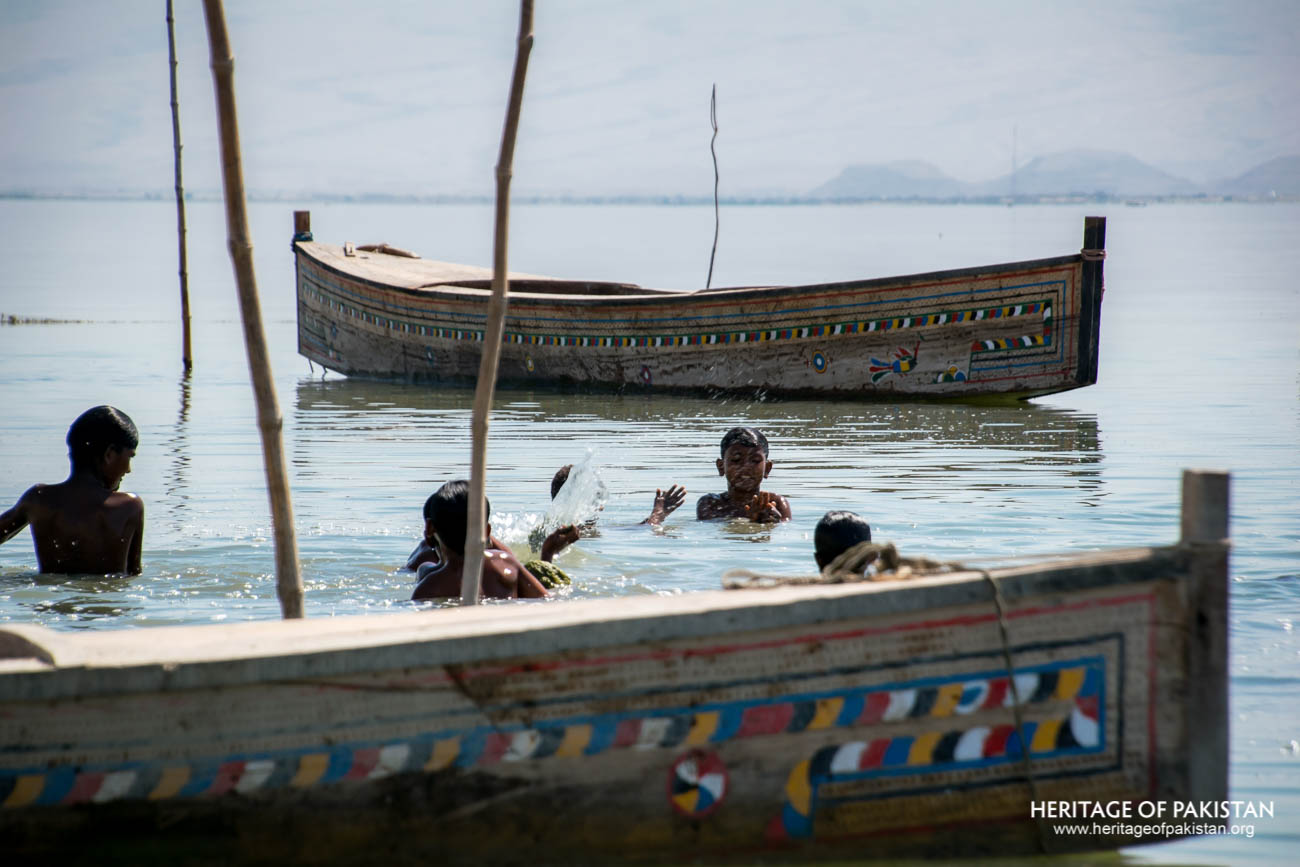
Mohanas at Manchar Lake, Sindh
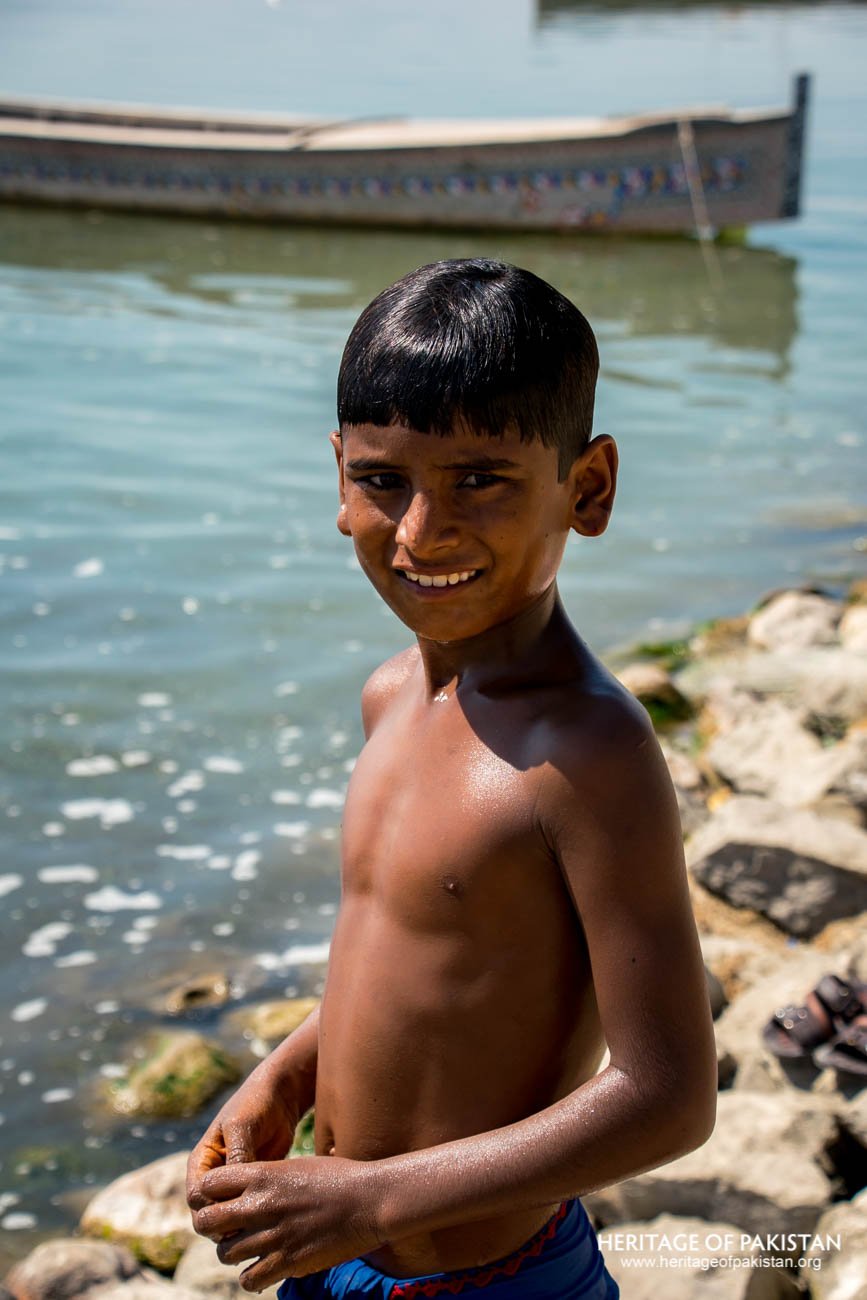
Mohana Child at Manchar Lake, Sindh
Originally Manchar was smaller in size and originated as a natural depression, collecting stormwater and hill torrents from the western Kirthar range. Over time, this shallow body of water was gradually transformed into the large lake that it currently is. The expansion of the lake began in earnest in 1930 with the construction of the Sukkur Barrage on the River Indus. As part of this infrastructural development, the pond was converted into a managed freshwater lake. Initially, the lake was fed by inundation canals, namely Aral Wah and Danister Wah, along with stormwater runoffs. In 1932, a third inlet was added: the Main Nara Valley (MNV) Drain. Though originally conceived as an inundation canal, the MNV Drain was later modified to accommodate wastewater and sewage from towns in upper Sindh.
The indigenous Mohana tribe, a traditional Sindhi fisherfolk community, has historically depended on Manchar Lake for its livelihood. Often referred to as the “Boat People” the Mohanas have relied on fishing and related activities for generations. Traditionally, many members of this community lived on houseboats and carried out their daily lives directly on the water. However, as fish populations have dwindled and environmental conditions have worsened, many Mohanas have relocated to embankments and settled on land adjacent to the lake. Today, only a few traditional houseboats remain. A significant number of Mohana men have migrated to coastal areas in search of alternative fishing opportunities, leaving their families to adapt to the changing circumstances near the lake.
Manchar Lake once played a vital role in supporting local agriculture, providing water for irrigation and contributing to regional food security. With the increasing salinity and toxicity of its waters, agricultural use has declined sharply. Vegetation and aquatic life within the lake have also suffered, with fish species and plant ecosystems gradually disappearing under the impact of persistent pollution.
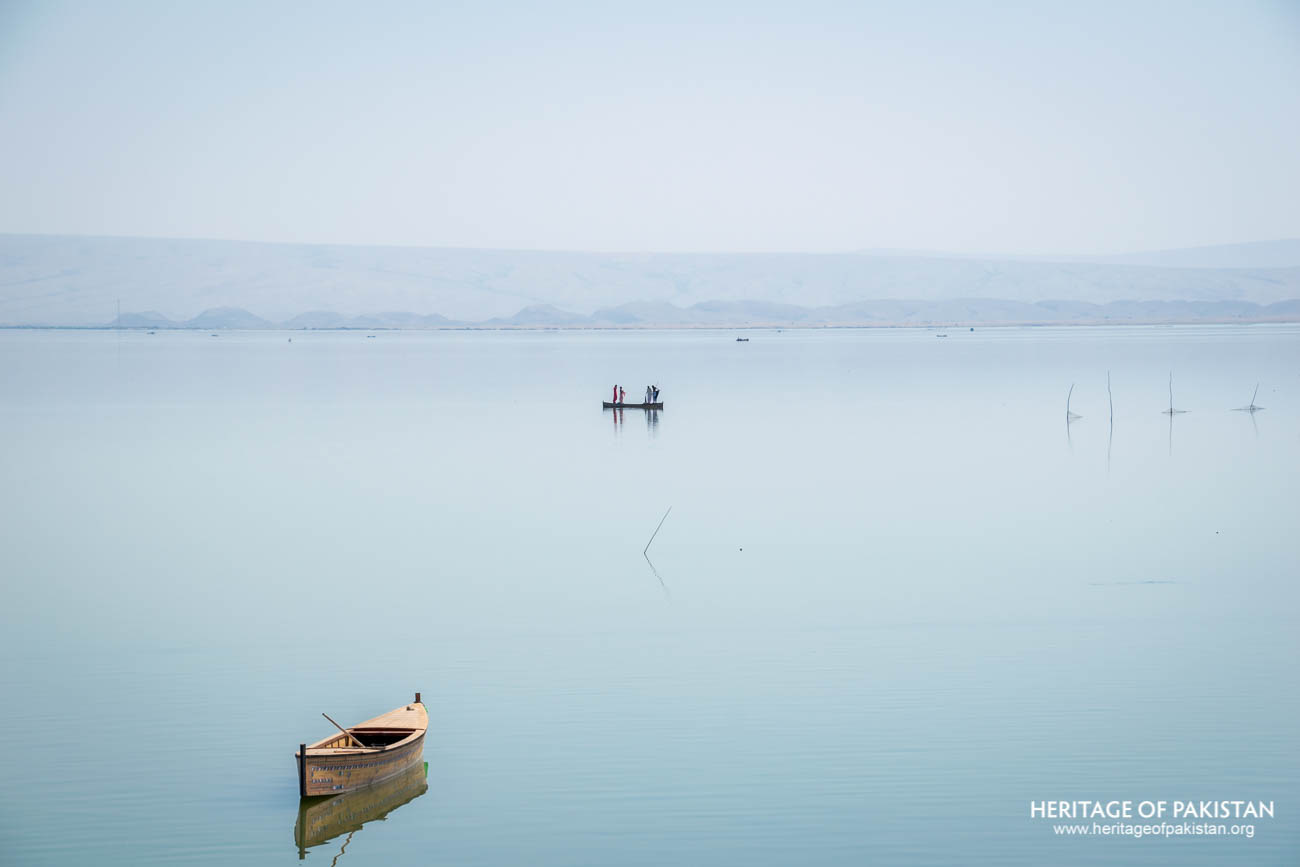
Manchar Lake is the largest freshwater lake in Pakistan
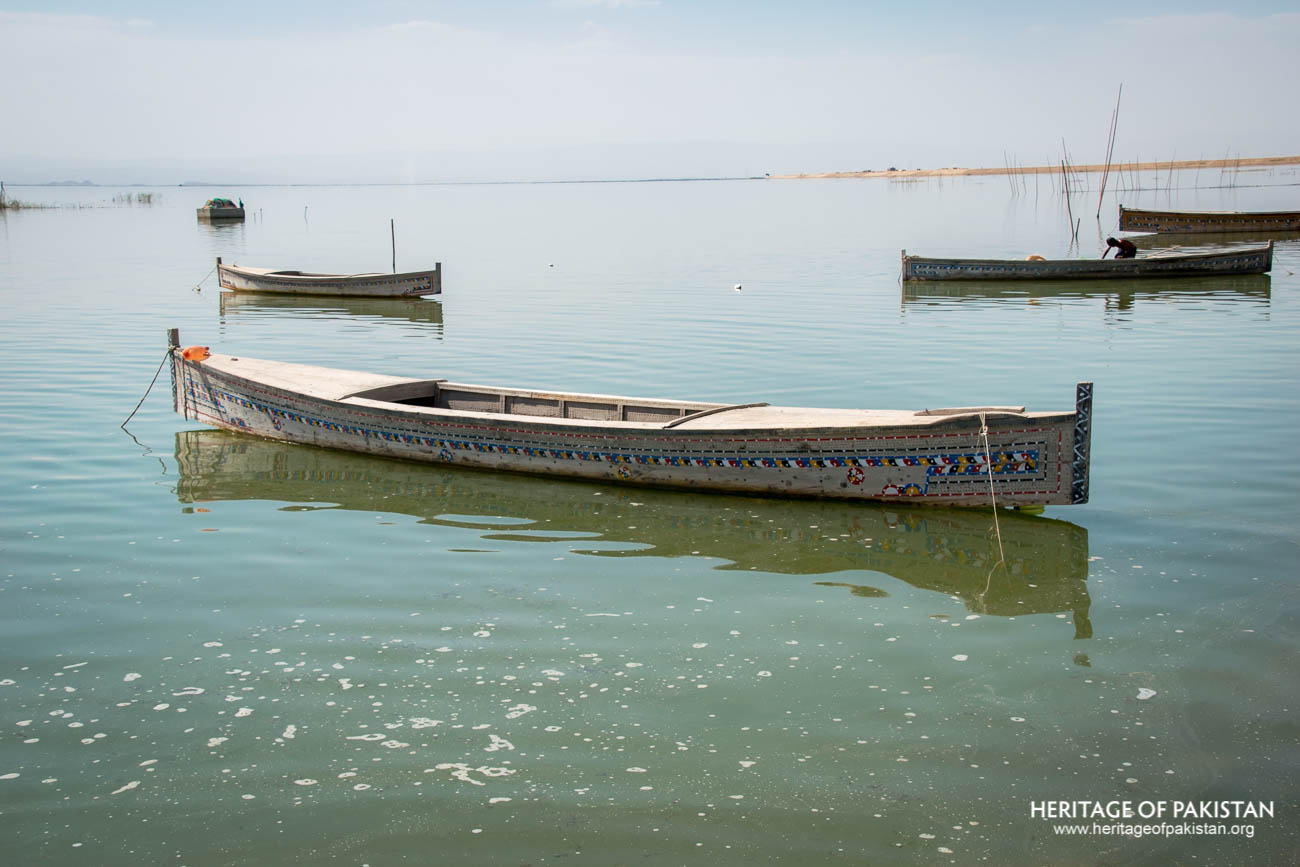
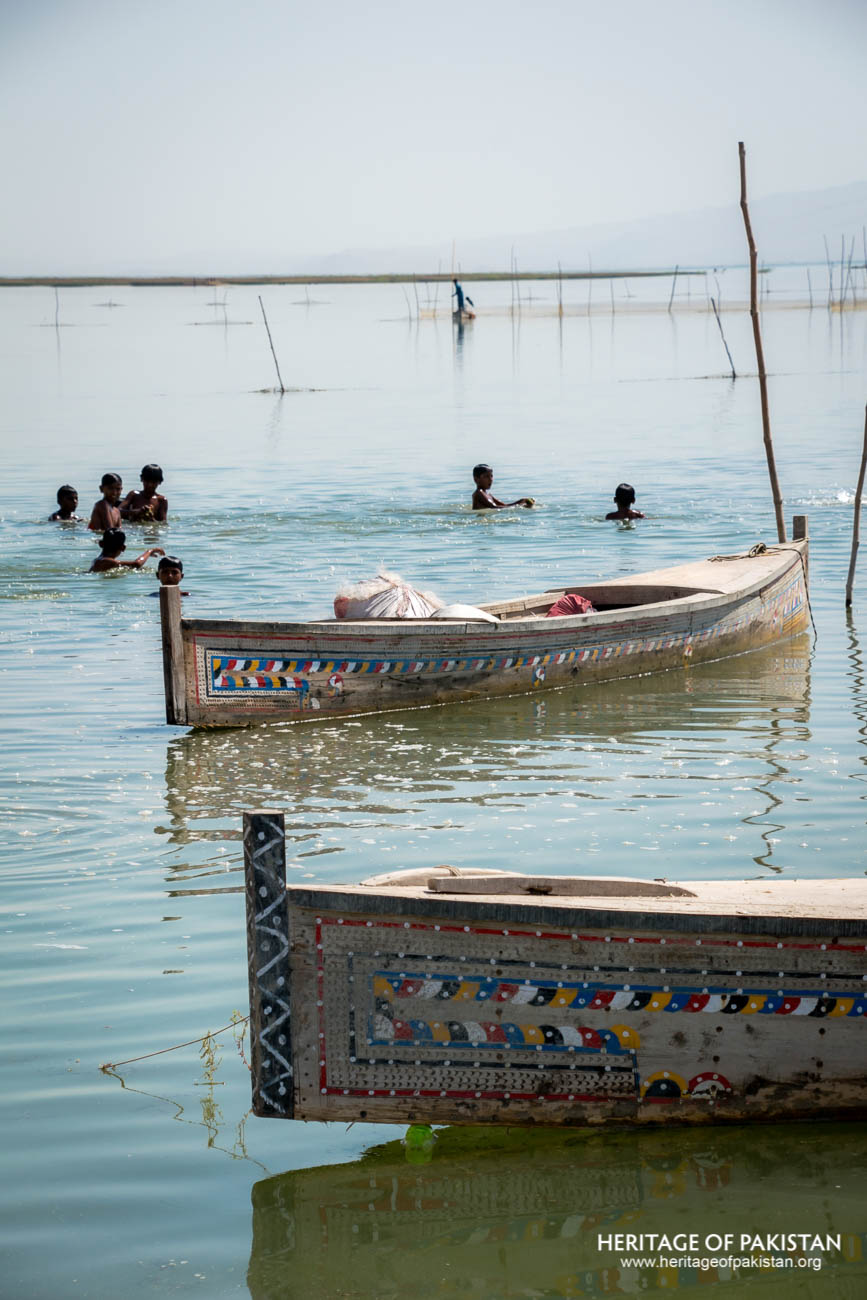
Mohana community at Manchar Lake
The construction of the MNV Drain marked the beginning of the environmental degradation of Manchar Lake. While the initial purpose was to control water distribution, the later remodeling of the drain to channel untreated municipal and industrial waste significantly compromised water quality. The issue was exacerbated in 1976 when the Water and Power Development Authority (WAPDA) converted the MNV Drain from a freshwater stream into a saline water conduit, diverting agricultural effluents directly into the lake. This was a pivotal moment in the environmental trajectory of the lake, and the consequences have been long-lasting.
By the 1980s, the MNV Drain began to carry not only sewage but also industrial and agricultural runoff. The situation further deteriorated in the 1990s when the Right Bank Outfall Drain (RBOD) Scheme was introduced. The RBOD was a large-scale initiative intended to carry industrial and agricultural effluents directly to the Arabian Sea. However, due to incomplete implementation, these toxic flows continued to be discharged into Manchar Lake. As a result, the once-freshwater body became increasingly polluted. The contamination caused by the MNVD remains one of the primary reasons for the current degradation of the lake’s ecosystem. The water quality of the MNVD is widely considered highly toxic and unsuitable for both aquatic life and human use.
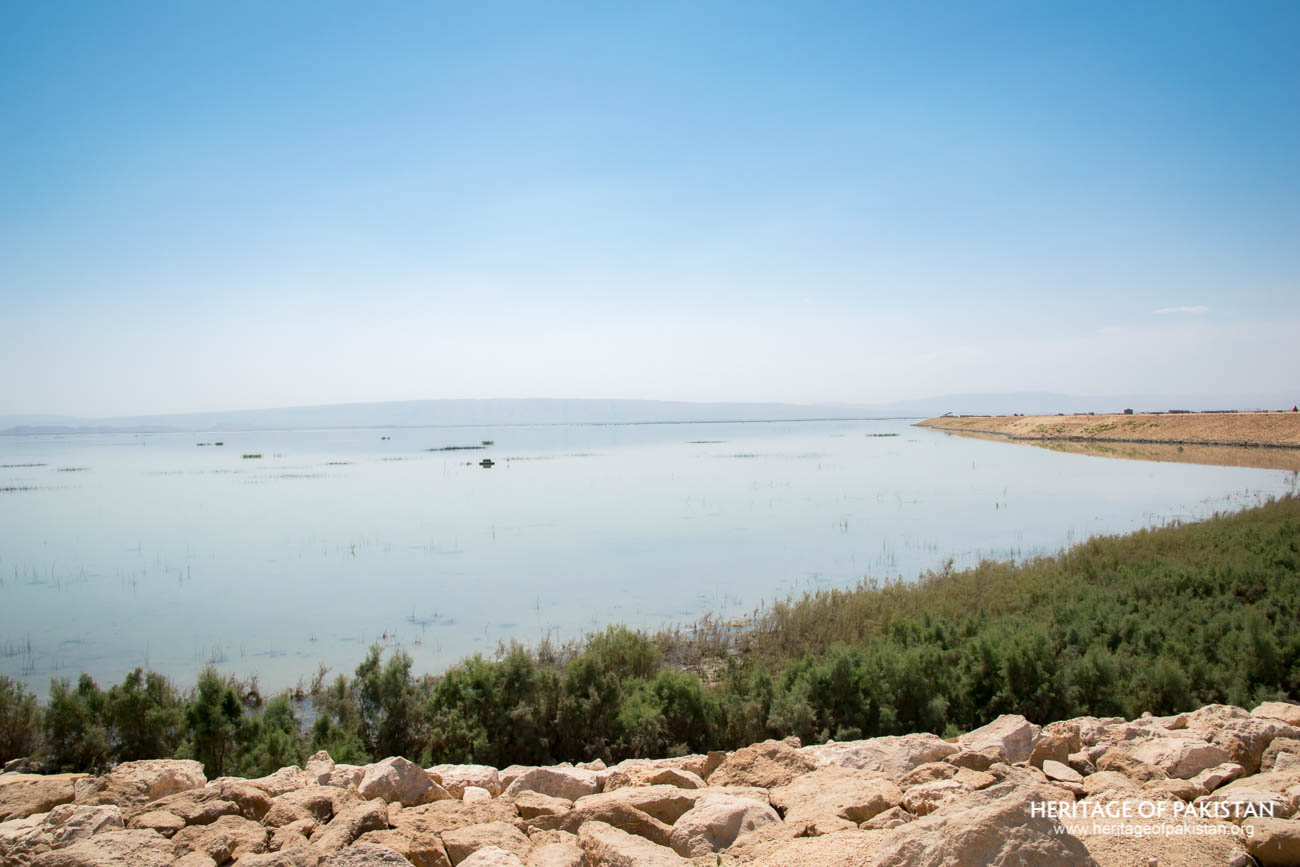
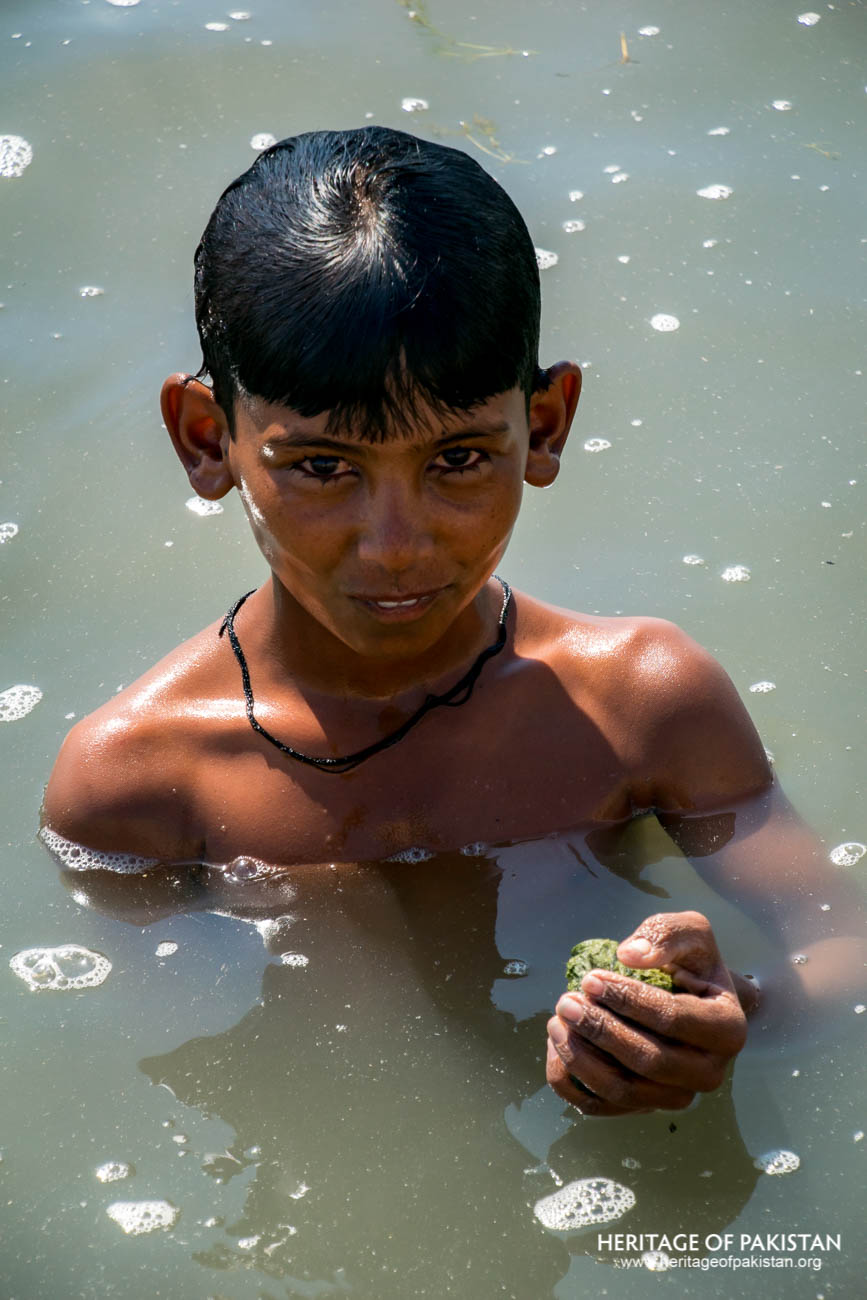
Mohana Child at Manchar Lake
The ecological decline of Manchar Lake has had direct implications for both wildlife and human communities. The lake was once a seasonal sanctuary for Siberian migratory birds, especially in the winter months. It also served as a hub for local agriculture and as a source of income for an estimated 20,000 fishermen during the 1980s when the lake’s water was still considered clean and “sweet” (PBoS, 1988). Today, due to persistent contamination, the number of residents living along the lake's banks has dropped significantly to between 4,000 and 5,000, and fishing has become nearly impossible.
The degradation of Manchar Lake underscores the pressing need for rehabilitation measures. Efforts to restore the lake’s ecological balance depend on consistent discharges of freshwater from both the Indus River and seasonal hill torrents. Without these natural inflows, and in the absence of effective waste management infrastructure, the condition of the lake continues to deteriorate. The incomplete status of the RBOD and the continuous influx of contaminated water from the MNVD have made the lake’s recovery an urgent but complex challenge.
While Manchar Lake remains a prominent geographical and cultural feature of Sindh, its future hinges on the implementation of sustainable environmental policies and infrastructural improvements. The lake’s historical, ecological, and social significance highlights the importance of coordinated intervention to ensure its long-term viability.
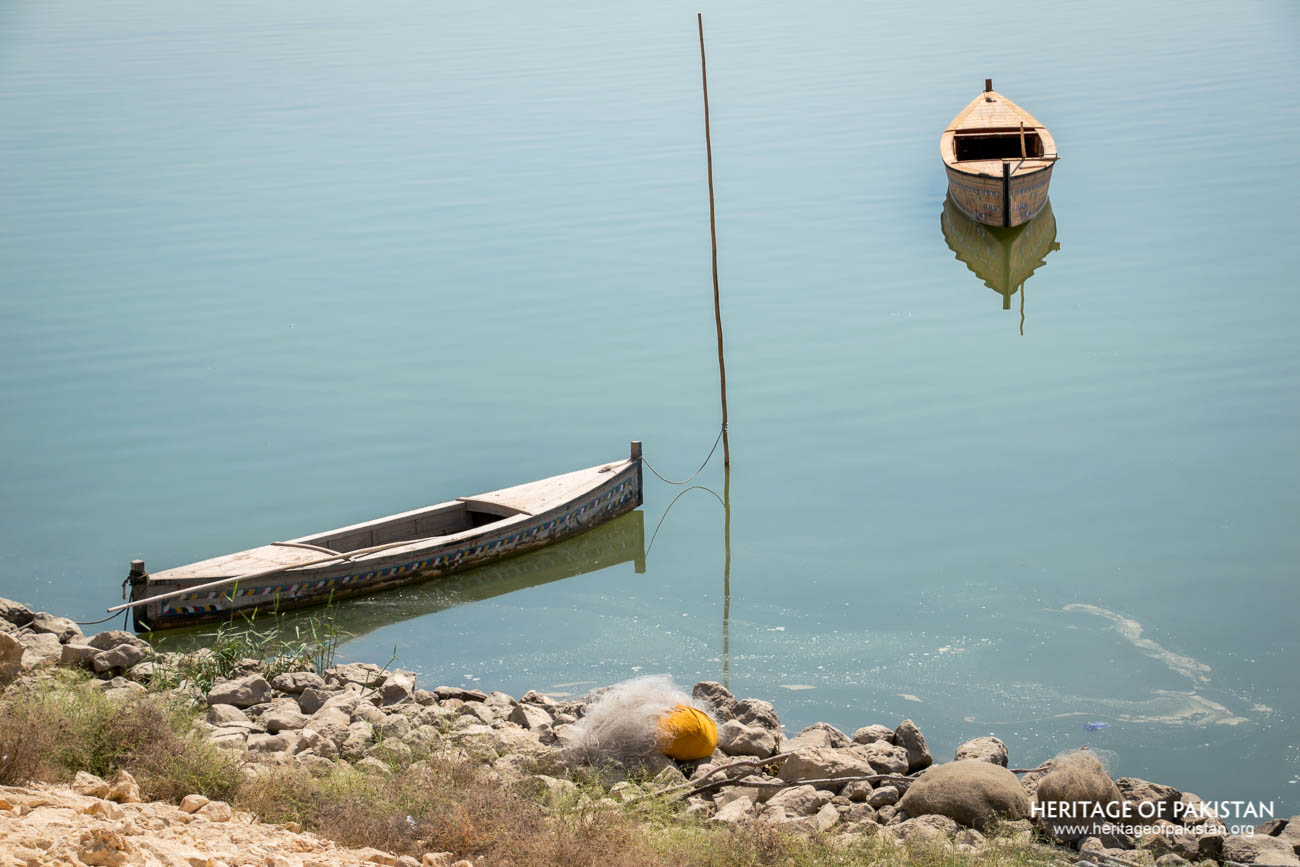

Discover the Manchar Lake image gallery and immerse yourself in photographs

All Photographs by Syed Noor Hussain and Sania Azhar.
All Rights Reserved. Photos may be used for Non-Commercial, Educational, Artistic, Research, Non-Profit & Academic purposes.
Commercial uses require licensing agreement.


Add a review